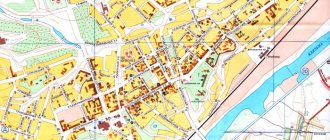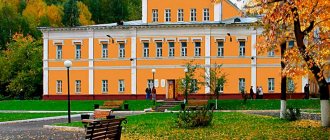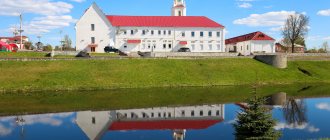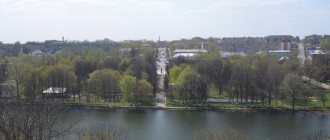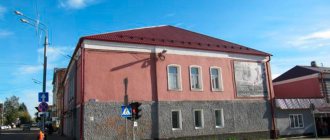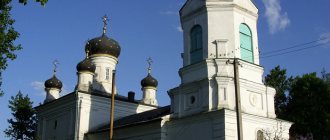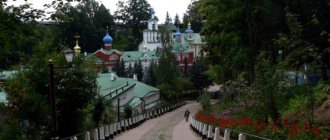Yelets is a city that is liked by connoisseurs of Russian antiquity, but causes melancholy among haters of the province. Here dilapidated mansions coexist with monuments to WWII heroes, centuries-old churches coexist with drinking establishments, and Ivan Bunin, Tikhon Khrennikov, and Konstantin Paustovsky once walked along the local bumpy roads.
The city remembers many fires, enemy raids and destruction. After all, how old is Yelets? In 2019, it turned 873 years old. He is one year older than the Mother See.
There is a lot to see and visit here. But this must be done thoughtfully. Most of the sights of Yelets may seem like just neglected buildings. But almost each of them keeps stories and legends about the bright events of the past.
We bring to your attention the history of Yelets with photos today and those taken more than a hundred years ago.
- Outskirts of Rus'
- History of the name
- Tamerlan in Yelets
- As part of the Principality of Moscow
- County town
- XVIII-XIX
- Monasteries and temples
- Father to all thieves
- Soviet time
- Modern Yelets
- Where is
Outskirts of Rus'
The history of Yelets begins with a fortress, which was founded in the 10th century as an outpost in the southeast of Rus'. The city defended the state from attacks by steppe nomads.
It was first mentioned in the chronicle of 1146. This year is considered to be the year of its foundation, but in fact the city is ancient. As stated in the chronicle, when Svyatoslav Olgovich visited these places, here, like any fortress of that time, there was a fully developed agriculture. And it took time to form.
In 1146, the city of Yelets was dependent on the Prince of Chernigov and was the center of an appanage principality, which soon became part of Ryazan. At that time he occupied a small territory. However, it was no less than modern Belgium.
So, the city of Yelets in the 12th century was the outskirts of Rus'. The people living here were brave, warlike, and possessed of high fighting qualities. But the enemies, namely the Polovtsians, knew very well where Yelets was located and regularly came to “visit”. And local warriors did not always give a worthy rebuff to these guests.
20 years after the first entry about Yelets appeared in the Nikon Chronicle, the city was burned to the ground. The Polovtsians did not leave a single stone from the principality.
But Yelets did not sink into oblivion, he was reborn to become a witness and participant in important events in the country and in the world.
View of the city and the Yelchik River
Natural attractions
The sights of Yelets can amaze not only with their ancient appearance and interesting museums, but also with their amazing nature, monuments created by nature itself. Anyone can visit them freely.
Vorgol rocks
The Vorgol rocks are chalk formations, which over time were almost completely covered by forest and steppe grasses.
The place is considered the most popular for relaxing from the bustle of the city , getting aesthetic pleasure and taking many photographs against the backdrop of amazing nature.
Noble Garden
No one can say for sure when and by whom the garden was founded, but according to preliminary estimates by botanists and historians, the trees are more than 200 years old. On its territory there are benches and gazebos created in the 19th and 20th centuries, and a pond inhabited by a flock of pigeons.
The noble garden seems to transport its visitors to another era, covering with its harmony the noise and heaviness of the city.
Hot beach
On a hot day, you want to plunge into the water and walk along the sandy shore. The authorities took care of the residents and tourists of the city and a beach was built on the Talchik River, on the territory of which there are changing cabins, benches, gazebos, picnic areas and a place for playing volleyball. The safety of swimmers is monitored by the rescue service.
Tamerlane
In Yelets, near the Ascension Cathedral, there is a chapel, next to it is the grave of soldiers who died during Timur’s invasion. Let's remember one of the legends of Yelets.
In 1395, Tamerlane defeated the troops of the Golden Horde and went to the northwest. I reached the city of Yelets, and something unexpected happened here. The fearless conquerors took the fortress without difficulty, but they did not know what to do with it next. There were no valuables in the city that could attract the attention of the all-powerful enslavers.
Tamerlane stopped and thought. And he stood in the pouring autumn rain with his army for no less than two weeks. Before, the Iron Lame had never allowed himself such a long period of inactivity.
So, Tamerlane stood and thought and abandoned the idea of conquering Muscovy. Why? Seeing the poor, provincial town of Yelets, he, a cold-blooded and cynical man, decided that the game was not worth the candle. Why go north? Everything there was plundered and burned by Tokhtamysh, and meanwhile the spies reported: the Muscovites are not delaying, gathering an army, preparing for battle.
For two weeks, Tamerlan weighed the pros and cons, listened to spies and “analysts,” and looked at the unfortunate city of Yelets. Yes, and turned towards Astrakhan.
However, perhaps Timur, as the famous legend says, really had a bad dream, after which he lost the desire to plunder plundered Rus'. And the small town of Yelets has nothing to do with it...
As part of the Principality of Moscow
In the 15th century there was relative calm in the history of Yelets. The city becomes the patrimony of Moscow, and local princes enter the service of the Moscow sovereign. The city was populated by service ranks, mostly arriving from the capital. The city of Yelets for Moscow is becoming an important strategic point that requires reliable protection.
There is a relative calm - the raids of the aggressive steppe inhabitants have stopped. The city is growing and getting stronger.
At the end of the 16th century, construction of Yelets began. The Vladimir master I. Katerinin arrives in the city and creates a plan for a new fortress and fort. Historical documents tell us how many residents there were in Yelets in those days - about three thousand.
What was the city like four hundred years ago? Judging by the same historical sources, Yelets in the 19th century looked like this: 12 towers, inside the fortress there was a sovereign courtyard, three churches, a prison and several other buildings. Craftsmen and service people lived in the city at that time. The settlements formed around the fortress were inhabited by archers, cab drivers and craftsmen.
County town
An important event in the history of the city of Yelets occurred in the first half of the 17th century. An administrative division was carried out and the Belgorod border line was built. Yelets ceased to be the outskirts of the state and became a district town. The development and settlement of the region was completed by the end of the century.
So the city of warriors turned into a city of artisans and traders. The development of Yelets, of course, was facilitated by fertile lands. Warehouses began to be built for the processing and storage of raw materials, industries appeared, and then the first enterprises. In the 18th century, Yelets lace became famous throughout Russia.
Orlovskaya Street, now Kommunarov
What to see in Yelets in 1 day
If you do not yet have a clear travel plan, then we advise you to use our list of what is worth seeing in Yelets in one day:
- Drama Theater "Benefit" (Komsomolskaya St., 83);
- Market Street;
- Factory "Eletsk Lace" (Karl Marx St.);
- Church of the Transfiguration;
- International festival "Sagittarius";
- Chapel of the Yelets Icon of the Mother of God;
- Olshanskaya Dam.
XVIII—XIX
Now Yelets is a city in the Lipetsk region. And once it belonged to Voronezh, and later Kursk and Oryol provinces. At the beginning of the 18th century, as a result of another administrative division, it became part of the Azov province.
The city often burned. It is not surprising, because it consisted for the most part, like almost all of Russia, of wooden buildings. However, there are many such houses in Yelets today.
The first major fire occurred in 1764. The second - in 1769. And seven years earlier, a commission on stone construction was created. Many Russian cities underwent restructuring, including Yelets, a new plan for which in 1770 was developed by a prominent metropolitan architect. However, a few stone buildings appeared earlier. For example, the Church of the Archangel Michael, built at the beginning of the 18th century.
Previously, in place of the stone church there was a wooden one. The famous temple is, alas, in a deplorable state.
Among Yelets entrepreneurs, the most active was Alexander Zausailov. Not only a merchant and industrialist, but also a philanthropist, with whose money many buildings were erected in the city, he founded a tobacco factory located at Lenin Street, 70.
Yes, not all photos of the city of Yelets are suitable for tourist brochures. Too many neglected buildings.
At the end of the 19th century, there was one merchant for every nine inhabitants. It was not for nothing that the local Arbat was called Torgovaya Street (now Mira Street).
Torgovaya Street
In addition to the Zausailovs, the Chernikin, Valuysky, and Rostovtsev dynasties were known in the city. Many merchants were repressed after the revolution. However, one of Zausailov’s descendants now lives in Yelets.
Much of what is known about the people and events of the 19th century has come down to us covered in a thick layer of urban myths. For example, one of the legends of Yelets is the story of the merchant Nikolai Ivanovich Taldykin. There are other properties in and around the city named after philanthropists and businessmen of the past. Let's say Chernikin Pond, which became notorious in the late 80s after it was polluted by a sugar factory. The pond was later cleaned.
Today, by provincial standards, machinists earn good money in the city. On Vermesheva Street there is a railway technical school where future railway workers are trained. The first such establishment in the city of Yelets was opened in 1869. Two years later, a men's gymnasium appeared, the same one where Bunin, Prishvin, and Semashko studied. Nowadays school No. 1 is located in the historical building.
Population of Yelets
Yelets has always attracted tourists and immigrants with its beauty and uniqueness. Despite the fact that during the civil wars and post-revolutionary times, as well as in connection with the Second World War, the population decreased noticeably, from 1950 to the present day there has been a significant increase. In just 5 years from 1950 to 1954, the population of the city of Yelets increased by 70 thousand inhabitants.
Due to the movement of villagers to the city in the 60s, when industry was rapidly developing and more and more workers were needed, the population acquired a simply frantic growth rate. In the 90s, migration to the city did not stop, but decreased somewhat. At the end of the same 90s, the population of Yelets reached 120 thousand people.
Maslenitsa celebrations
In the 2000s, the population briefly became stable and subsequently declined slightly. According to data at the beginning of 2014, the population of the city of Yelets was 106,377 people. Such statistics over the past 10 years are due to the fact that people are now moving to larger cities and regional centers.
The doors of the Yelets Hotel are always open for city guests. However, this is the only hotel in the city, but it has a sufficient number of rooms. To accommodate everyone.
The city of Yelets is home to several universities - branches of universities in other regions and the well-known Yelets State University. Bunin, allowing local and visiting students to receive a decent public education in various specialties. Due to this, a large percentage of the city's population is between 18 and 25 years old. Many people who come to Yelets for the first time meet practically only young people on the streets, which creates a corresponding impression. You can often hear about the city of Yelets that it is a student city.
Yelets State University named after. Bunina
Many outside observers and guests of the city, passing through or on vacation, define the moral level of the residents as calm and friendly people. It’s not so often that you can find noisy companies on the streets after midnight. Although their complete absence cannot be denied either. All public events close, as a rule, no later than twelve at night.
Monasteries and temples
In the 19th century, Yelets turned from a city of artisans into a center of trade and industry. Merchants united into societies, and the members of each considered it their duty to donate for the construction of the temple. That's why there are so many of them here.
It is worth remembering another legend of Yelets.
The merchants once went to bow to the sovereign. They wanted their glorious city to become a provincial city, which is what they asked the king to do. And he replied: “As you build 33 temples, so it will be your way.”
Voshchnesensky Cathedral
Yelets merchants built churches very actively. But their dream did not come true. Yelets was destined to remain a district town. Although very beautiful - before the revolution it was one of the most comfortable in Russia.
The youngest temple in Yelets is the Grand Ducal Church, the history of which is connected with the name of Mikhail Romanov, who visited these places in 1909.
Among the Yelets churches there is one unusual one. More precisely, it was. We are talking about the Lutheran church, which was built before the revolution. It looked very nice then, although it did not fit into the general architectural style. Over the years, the church fell into disrepair, but did not lose its charm.
However, several years ago local “craftsmen” restored it, and it changed beyond recognition.
There is not a trace left of the church, as can be seen by comparing the pre-revolutionary photo with the current one.
Father to all thieves
So, before us is a photo of the city of Yelets, spiritual, with a rich and interesting history, although somewhat neglected. Brave warriors and outstanding writers lived here. Significant events took place here. Where then did the expression “Elets is the father of all thieves” come from?
The saying originated in ancient times. And then thieves were called not only thieves, but also for some reason runaway peasants (who, however, could be dishonest). The city accepted the unfortunates, and by decree of Boris Godunov, six years later they were no longer subject to search.
Pre-revolutionary Yelets. Jail
Soviet time
After the revolution of 1917, the city became different. The devastation stopped the development of Yelets for many years; the Civil War dealt particular damage to it. Afterwards, local residents began to restore the farm. However, these were already different Yelts - collectivization led to population migration to the cities.
By the mid-30s, about twenty enterprises operated here. And the churches were all closed.
Of course, the Great Patriotic War brought heavy losses to the city. In those years, Yelets was an important base for the front, and the operation of the same name became an integral part of the battle for Moscow. The occupation lasted five days. On December 11, the city was liberated from the Nazis.
On the 75th anniversary of the lifting of the occupation, a reconstruction of street fighting took place, organized by patriotic clubs in Moscow, Kursk, and Belgorod.
Modern Yelets
Many enterprises do not operate, there is no work, the streets are dirty, buildings are in disrepair - this is what a visitor who has little interest in local attractions can say about the city. And there is truth in these words.
There are very few children's playgrounds here. As a family, Yelts residents go to the city park or, if possible, to Kudykina Mountain, which is conveniently accessible only by car.
There is also some entertainment for adults here. One bowling alley, one cinema, many beer bars (there are more of them here than pharmacies) and the night club “KaraKum”, where a simple crowd gathers and sometimes fights and showdowns in the style of the 90s occur. In general, everything is the same as in any other Russian provincial city.
A vacation in Yelets should be understood as an excursion, although there are many picturesque places in the vicinity of the city.
Interesting places to relax with children
Yelets is an ideal place for a family holiday. There are plenty of places in the city where you can relax with children. Some of them are presented below.
Ice Palace named after. A. Tarasova
In 2014, a skating rink dedicated to the activities of the famous coach Tarasov opened in the city. Here you can attend figure skating lessons, as well as relax and have fun with your children during public skating.
The palace is equipped with the latest equipment, equipment, medical personnel and strong coaching staff who are ready to help.
Children's Park named after. B.G. Lesyuka
The park was formed by Lesyuk in 1947 and continues to exist and operate. In 2006, it changed its direction and began to refer to children's centers. They received many awards and were awarded the title of a park of the highest category. On its territory you can leave children under the supervision of an animator and teachers.
City Park
The park has a large number of different attractions that will interest not only children, but also adults for a long time. You can visit the botanical garden, relax in cozy gazebos and eat in a cafe.
Where is
Yelets cannot be avoided by those who travel to the sea - it is located on the right side of the M-4. If you have time, it is worth visiting this small land of serenity on the way to the Sochi resort and see at least a few local attractions. For example, an exhibition of military equipment is an open-air museum, not far from the Karakum Bridge.
Yelets is located 400 km from Moscow. Can be reached by bus. There are two tiny bus stations here, located at different ends of the city. One at the merchant. The other is on Zadonskaya Street (this station is located on the way from Yelets to another wonderful city in the Lipetsk region - Zadonsk). From Moscow, buses run from Paveletsky station and Krasnogvardeyskaya station.
Coat of arms
The coat of arms of Yelets is presented in the form of a French shield. On a silver background there is a red deer with golden hooves and antlers. Behind the animal is a spruce tree growing from the firmament covered with greenery. Plants symbolize spring, hope, nature, health.
The artistic composition was adopted by decision of the Yelets City Council of Deputies No. 372 of September 28, 2004. Included in the State Heraldic Register of the Russian Federation under No. 1603. Goes back to the 1781 version.



